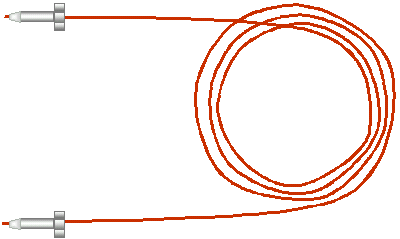|
"an IonSource tutorial"
Make Your Own HPLC Sample Injection Loop
|
||
|
Introduction |
- |
|
| The injection loop is a critical component of an HPLC and is potentially one of the largest sources of excess HPLC system volume. The sample is injected into the loop while the loop is switched out of the HPLC flow path. After the loop is filled with sample it is switched back into the flow path and the sample is swept onto the head of the HPLC column for later elution or the sample is injected directly into a mass spectrometer as part of a flow injection analysis. |  |
|
|
PEEK™ Loop |
||
| . | ||
| . | ||
|
Injection Loop Dimensions |
||
|
. |
||
|
Loop dimensions are important. The most accurate injections are made with a technique known as overfilling. When using the overfill technique a sample injection will be made that is 3 to 5 times larger than the volume of the injection loop. This is done because the core of an injection plug travels faster than the outer perimeter of the injection and if one tries to make, for example, a 100 µL injection onto a 100 µL loop it is likely that the core of that sample injection will over shoot the end of the loop and go to waste. An overfill ensures that the loop is completely filled and will inject a precise amount, the exact volume of the loop. Overfilling is fine if the sample amount is unlimited. However if you are performing a characterization of a rare species the thought of sending any of that sample to waste is very very scary. Often when the sample is limited an under fill of the sample loop is performed. Optimizing the loop volume for the injection is important. The loop can be a significant source of HPLC system dead volume. There is no reason to have a 1 mL loop when the injection volume is 10 µLs. A large loop volume will delay the peak and possibly adversely affect your chromatography. For a proper under fill, 10 µLs of a precious sample can be safely made onto a 25 µL loop. In this latter example the tailored loop volume helps to cut down on surface area, where a dilute sample may adsorb, and also helps to improve the chromatography. In addition if the HPLC flow rate is low, 25 to 10 µL/min, it is generally better to keep the internal diameter of the injection loop low, preferably below 125 µM to aid in efficient evacuation of the loop. |
||
|
. |
||
|
. |
||